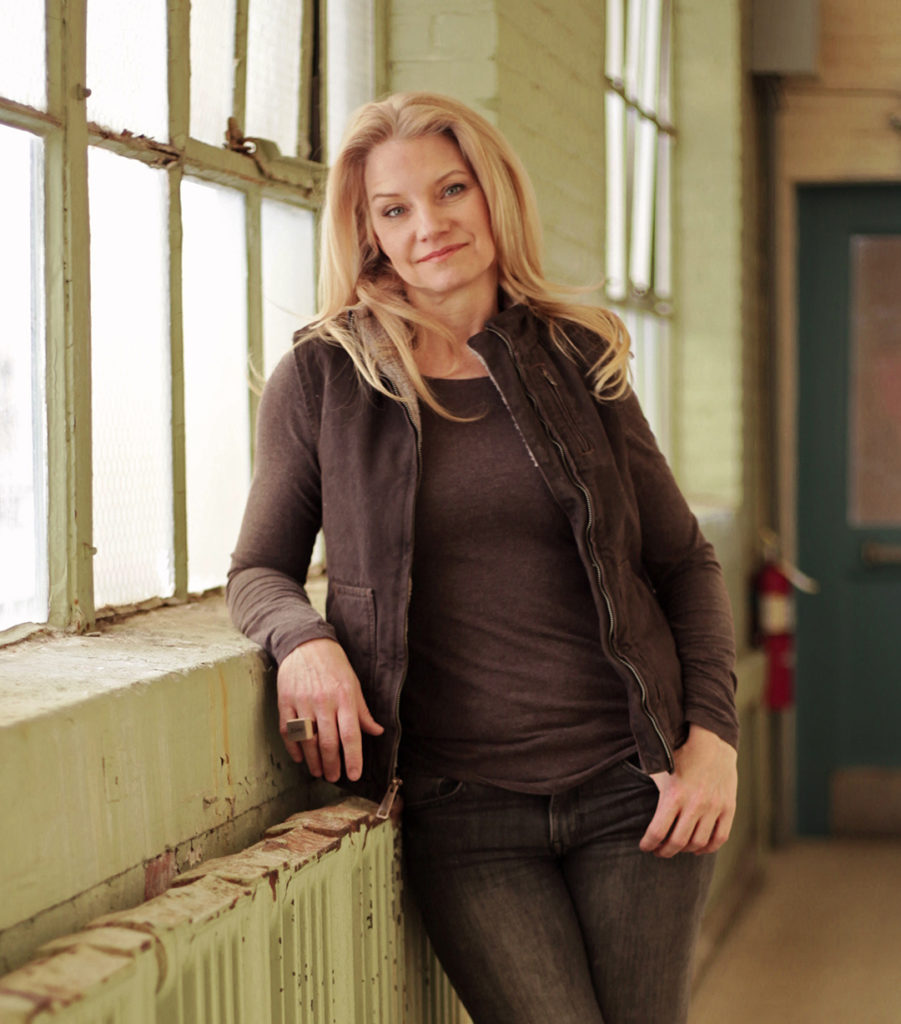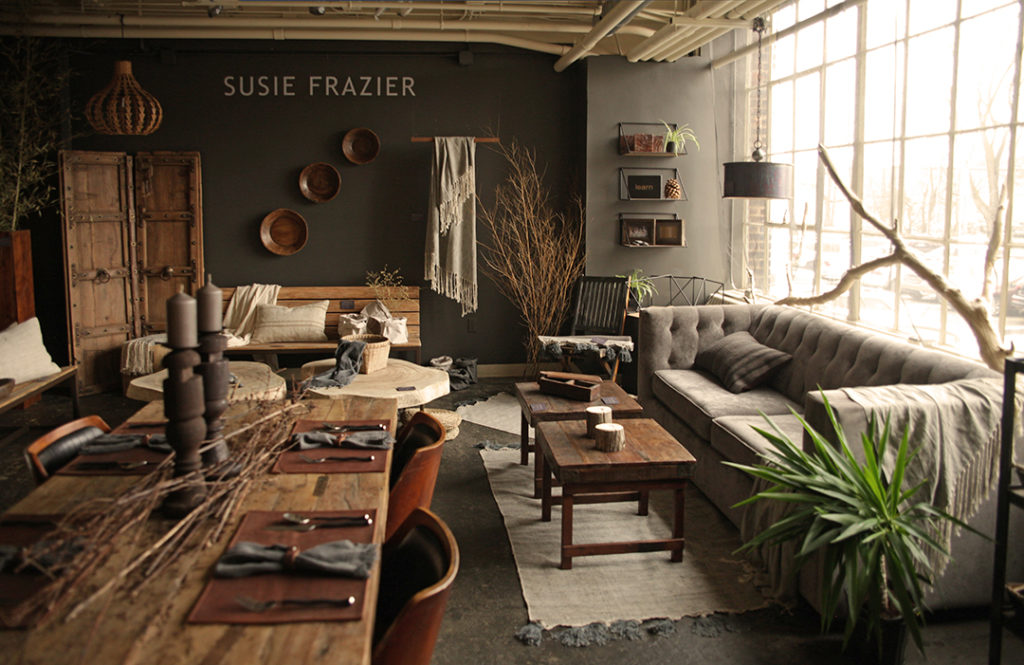(Published in Crain’s Cleveland on 11/28/20.)
Artist Anne Harrill knows she’s fortunate to have kept her business open during a pandemic that shuttered small storefronts nationwide.
Océanne — which deals in vintage-inspired jewelry, apparel and accessories — has been buoyed by a combination of online sales, a $23,000 Paycheck Protection Program loan and a dedicated shop-local movement.
Further support arrived in early November with the mobile launch of Maker Town, a web application created by Cleveland artist Susie Frazier to help consumers find Northeast Ohio’s art-related businesses, boutiques and galleries.
Harrill is one of 498 entrepreneurial artists on the budding Maker Town network. Though the mobile app directs users to artist studios, commercial workshops and other maker-related businesses, it is not an e-commerce site.
Rather, the app — now available through Google and Apple — aggregates regional data to reveal types of handmade products and where to find them. Acting as a shopping concierge with GPS functionality, Maker Town sorts searches by home décor, furniture, jewelry and additional products. Qualifying businesses are viewable by interactive maps, alphabetical lists or Instagram-style images.
Océanne began life a decade ago in a spare bedroom of Harrill’s home, growing into a modern jewelry and apparel brand now operating from a 2,000-square-foot Gordon Square storefront. COVID-19 stay-at-home orders closed the business from March to June, with online sales now comprising 80% of overall revenue, a figure Harrill declined to share.ADVERTISING
“We also sell wholesale, so things have been steady business-wise,” said Harrill, a native of France. “We’ve been featured as a minority-owned business as well, which has drawn some new eyes. We are lucky to be in a supportive neighborhood.”
Maker Town ideally improves upon features found on Etsy, Shopify and similar apps, said founder Frazier. For instance, consumers can shop for makers that offer products at $100 or below. A few clicks navigates users to short company descriptions alongside product images and links to e-commerce sites. Frazier expects the app to boost a transitioning Cleveland maker community impacted by virus-canceled festivals, art walks and flea markets.

“Access to artists is gone with events being shut down, so as a region, where are people getting their touchpoints with local makers?” Frazier said. “We need ways for people to find us without being dependent on physical walk-ins.”‘All boats rise with the tide’
Housed in 78th Street Studios at the Gordon Square Arts District, the Susie Frazier Showroom sells home accessories, apparel and high-end art as well as custom products geared toward corporate clients. Loss of “Third Friday” art walks at Frazier’s West Side location — not to mention other live events fallen victim to the pandemic — cut her annual revenue by 53% in 2020.

Frazier released Maker Town in deference to COVID shutdowns and a retail environment trending toward digital even pre-pandemic. For the first 10 days of the 2020 U.S. holiday shopping season, buyers spent $21.7 billion online — a 21% jump over last year, according to Adobe Analytics. Not having the luxury of a storefront further motivated Frazier in forming an online directory of area craftspeople.
“I have 20 years in the arts community and maker scene, and know all boats rise with the tide,” Frazier said. “When you make choices as a collective, you get a better success rate than doing it on your own.”
The maker sector is much broader than artists, Frazier said. Makers are businesspeople who have built an economic ecosystem via online commerce and point-of-sale transactions.
Markets such as home décor (estimated at $125 million in 2019 per Allied Market Research figures) and furniture ($800 million by 2025) are populated by creative product designers. Visual artists and gallery owners, meanwhile, fall into a market valued at $64 billion, per estimates from the Statista business data platform.
Impressive figures aside, the virus crisis has exposed the sector’s vulnerabilities, Frazier said. Foundation and grant dollars are generally funneled to arts nonprofits rather than entrepreneurs, leaving a multimillion dollar industry in dire straits.
“This (app) is about introducing a tangible solution that appeals to people today,” Frazier said. “It’s the most simple, basic stuff that should have been happening for years, but never did. So when the coronavirus happened, we had to shift as an industry.”
The Arts Cleveland nonprofit is leading efforts to get CARES Act funding to the artist community, distributing $1.3 million to for-profit arts venues and artists. The organization is also serving as fiscal sponsor for Maker Town, assisting in the initiative’s marketing and financing efforts. Director of programs and services Valerie Schumacher said her organization is getting a major uptick in requests from craftspeople facing fundraising struggles due to their nontraditional business status.
“People have misperceptions about what artists do. It’s not a persona; it’s a profession,” Schumacher said. “This app is a tool to get eyes on your business that you otherwise wouldn’t. What Susie is doing is important work that’s keeping that innovative spirit alive, and exactly why we do what we do as a nonprofit.”Navigating through a crisis
While Frazier has identified about 500 Northeast Ohio makers thus far, she is always on the hunt for more. Qualifying businesses must be located within 50 miles of downtown Cleveland and have an active website or physical location. Local artists not pre-loaded on the app can submit their details for inclusion through the Maker Town website.
As of mid-November, Maker Town has procured 778 unique visits. About 700 would-be consumers linked from the app to artist websites, although Frazier is currently unable to track whether those users made purchases.
The app came to be through a marketing, research and web design team Frazier hired. A comprehensive search tool has always been the plan, considering the proliferation of e-commerce sites in existence.
“Makers have platforms like Etsy, or social media pages where they’re selling to the public through DMs,” Frazier said. “Another e-commerce platform wouldn’t be useful. This is more powerful.”
Jewelry maker Harrill envisions Maker Town as a beacon for the “shop small” movement currently keeping her business afloat.
“It’s a way to find brick-and-mortar stores without going to Target,” Harrill said. “It’s a really cool concept. I browse the app myself to find other stores.”
Maker Town remains free for users until 2021, when Frazier plans to move to a tiered subscription pricing model. For now, she’s proud to help fellow makers navigate tough times while giving the public a clearer picture of an underappreciated creative sector.
“My hope is that agencies broaden their scope of what they’re measuring to more accurately include the hundreds of arts entrepreneurs playing a significant part in America’s fast-growing maker movement,” Frazier said.
